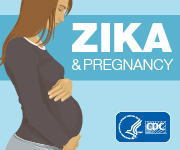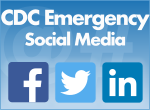Resource Library
By Topic - Communications and Public Information
Choose a topic:
| Title | Source | Media | Audience |
|---|---|---|---|
| Title | Source | Media | Audience |
|
Radiation Emergency Training for Poison Center Staff This training will serve as an informational and educational resource about radiation exposure and illness for poison control staff. The ultimate goal of the training is to prepare poison control staff to react appropriately and share vital information in the event of a radiation emergency. |
CDC | Website | Poison center staff, clinicians, and public health professionals |
|
This emergency communication tool provides a frame of reference for relative hazards of radiation, conveying meaning without using radiation measurements or units that are unfamiliar to people. It is for use with protective action recommendations or instructions. |
CDC | Website | Public health professionals and communicators |
|
Training: Myths of Radiation: Communicating in Radiation Emergencies Communication in Radiation Emergencies: Myths of Radiation is a new training that discusses common radiation myths and identifies communications strategies to dispel them. |
CDC | Video | State and local public information officers (PIOs), radiation protection professionals, public health directors, and public health administrators |
|
Training: Radiation Basics Made Simple A training module that introduces participants to the fundamentals of radiation and radioactivity. This training features an enhanced lecture-style video and interactive knowledge checks to deliver and reinforce key concepts. |
CDC | Video | Public Health Professionals, Clinicians, First Responders |
|
Postcard for Professionals - Radiation Emergencies. Get Inside. Stay Inside. Stay Tuned. A postcard for professionals that can be used to promote the protective message of "Get Inside. Stay Inside. Stay Tuned.", describing materials that can be found on the CDC Radiation Emergencies website. |
CDC | Public Health Professionals, Clinicians, First Responders | |
|
Postcard for the General Public - Radiation Emergencies. Get Inside. Stay Inside. Stay Tuned. A postcard for the general public that can be used to promote the protective message of "Get Inside. Stay Inside. Stay Tuned.", describing what to do in a radiation emergency. |
CDC | Public Health Professionals, Clinicians, First Responders | |
|
Messaging and B-Roll on Nuclear Weapons and Dirty Bombs Details how to best communicate in the first hours of a potential radiation emergency, specifically involving nuclear weapons or dirty bombs. |
CDC | Website | Clinicians, Public health professionals, First Responders |
| Improvised Nuclear Device Response and Recovery: Communicating in the Immediate Aftermath
A resource for emergency responders and federal, state, local, tribal, and territorial officials communicating with the public in the immediate aftermath of an improvised nuclear detonation in the United States. An interagency group of federal communicators and radiation technical experts developed the messages in this document. |
FEMA | Website | Public Health Professionals, Clinicians, First Responders |
| Communicating During and After a Nuclear Power Plant Incident, June 2013
This document provides communications guidance for domestic nuclear power plant (NPP) incidents, including sample text and suggested answers to anticipated public and media questions. This document also provides background information explaining roles and responsibilities across all levels of government during an NPP incident. While primarily created for Federal leaders who will speak to the public, this document should also complement the routinely exercised communication materials used by State, local, and tribal officials. |
FEMA |
Website | Public Health Professionals, Clinicians, First Responders |
|
CDC's Roles and Responsibilities in the Event of a Nuclear or Radiological Terrorist Attack CDC has prepared this fact sheet to help people understand the roles and responsibilities of CDC during a radiological emergency. |
CDC | Website | Clinicians, Public health professionals, First responders, Medical examiners, coroners, funeral directors |
|
Emergency Risk Communication (ERC) CDCynergy A website looking at what emergency risk communication can take place before, during, and after a radiation emergency. |
CDC | Website | Clinicians, Public health professionals, First responders, Medical examiners, coroners, funeral directors |
|
Public Health Planning for Radiological and Nuclear Terrorism A video that is intended to help public health professionals prepare for a radiological incident. |
CDC |
Video | Public Health Professionals |
|
Radiation and Pregnancy: A Fact Sheet for Clinicians A fact sheet for clinicians about the effects of radiation on pregnant women. |
CDC | Website | Clinicians |
|
Radiological/Nuclear Law Enforcement and Public Health Investigation Handbook - September, 2011 This handbook serves to introduce RN LE and PH investigations, identify potential barriers and solutions that LE and PH personnel will encounter during their investigations and enhance appreciation across each discipline. |
CDC | Public Health Professionals | |
|
Public Health Planning DVD Transcripts A transcript of the CDC's public health planning DVD. |
CDC | Public health professionals | |
|
Radiation Emergencies Public Health Roundtable: The Role of Poison Centers A roundtable discussion group summary report summarizing a training session and discussion on current and potential roles poison centers have in radiation emergency preparedness and response. |
CDC | Clinicians, Public health professionals | |
|
Video: Radiation Emergencies Public Health Roundtable: The Role of Poison Centers A recording of a roundtable discussion group session, bringing together poison control professionals across the country for discussion about current and future roles poison centers have in radiation emergency preparedness and response. |
CDC | Video | Clinicians, Public health professionals |
|
Radioisotope Brief: Americium-241 (Am-241) A site with information on the radioactive isotope Americium-241. |
CDC | Website | Clinicians, Public health professionals, First responders, Medical examiners, coroners, funeral directors |
|
Radioisotope Brief: Cesium-137 (Cs-137) A site with information on the radioactive isotope Cesium-137. |
CDC | Website | Clinicians, Public health professionals, First responders, Medical examiners, coroners, funeral directors |
|
Radioisotope Brief: Cobalt-60 (Co-60) A site with information on the radioactive isotope Cobalt-60. |
CDC | Website | Clinicians, Public health professionals, First responders, Medical examiners, coroners, funeral directors |
|
Radioisotope Brief: Iodine-131 (I-131) A site with information on the radioactive isotope Iodine-131. |
CDC | Website | Clinicians, Public health professionals, First responders, Medical examiners, coroners, funeral directors |
|
Frequently Asked Questions (FAQ) About Iodine-131 Found in Milk A site with information on the radioactive isotope Iodine-131 and what to do if it is found in milk. |
CDC | Website | Public health professionals, First responders, Medical examiners, coroners, funeral directors |
|
Frequently Asked Questions about Iodine-131 Found in Surface Water A site with information on the radioactive isotope Iodine-131 and what to do if it is found in surface water. |
CDC | Website | Public health professionals, First responders, Medical examiners, coroners, funeral directors |
|
Radioisotope Brief: Iridium-192 (Ir-192) A site with information on the radioactive isotope Iridium-192. |
CDC | Website | Clinicians, Public health professionals, First responders, Medical examiners, coroners, funeral directors |
|
A site with information on the radioactive isotope Plutonium. |
CDC | Website | Clinicians, Public health professionals, First responders, Medical examiners, coroners, funeral directors |
|
A site with information on the radioactive isotope Uranium. |
CDC | Website | Clinicians, Public health professionals, First responders, Medical examiners, coroners, funeral directors |
|
Infographic: Decontamination for Yourself and Others An infographic detailing how to decontaminate yourself or someone else. More information can be found at How to Self-Decontaminate, Decontamination-Helping Others, and Decontamination-Pets |
CDC | PDF, Image | Clinicians, Public health professionals |
|
Infographic: Radiation Contamination Versus Exposure An infographic detailing the differences between radioactive contamination and exposure. More information can be found at Contamination Vs. Exposure. |
CDC | PDF, Image | Clinicians, Public health professionals |
|
Infographic: Radiation Emergencies and Pregnancy An infographic detailing how a radiation emergency can affect the pregnant woman and developing child. More information can be found at Health Information for Specific Groups: Pregnancy. |
CDC | PDF, Image | Clinicians, Public health professionals |
|
Infographic: How Potassium Iodide (KI) Works An infographic detailing what potassium iodide (KI) is, how it works and when you should or should not take it. More information can be found at Countermeasures: Potassium Iodide. |
CDC | PDF, Image | Clinicians, Public health professionals |
|
Infographic: How Prussian Blue Works An infographic detailing what Prussian blue is, how it works and when you should or should not take it. More information can be found at Countermeasures: Prussian Blue. |
CDC | PDF, Image | Clinicians, Public health professionals |
|
Infographic: Where to go in a Radiation Emergency An infographic detailing where to go in a radiation emergency. More information can be found at Get Inside and Stay Tuned to Learn How to Evacuate. |
CDC | PDF, Image | Clinicians, Public health professionals |
|
Infographic: Radiological Exposure Device (RED) An infographic detailing what a radiological exposure device (RED) is, its main dangers and how you can protect yourself. More information can be found at More Types: Radiological Exposure Device. |
CDC | PDF, Image | Clinicians, Public health professionals |
|
Infographic: Radiological Dispersal Device (RDD) An infographic detailing what a radiological dispersal device (RDD) or "dirty bomb" is and how you can protect yourself. More information can be found at More Types: Radiological Dispersal Device |
CDC | PDF, Image | Clinicians, Public health professionals |
|
Infographic: Improvised Nuclear Device (IND) An infographic detailing what an improvised nuclear device (IND) is, main dangers and how you can protect yourself. More information can be found at More Types: Improvised Nuclear Device and Other Nuclear Weapons. |
CDC | PDF, Image | Clinicians, Public health professionals |
|
Infographic: Nuclear Power Plant Incident An infographic detailing the main dangers of a nuclear power plant incident and how you can protect yourself. More information can be found at More Types: Nuclear Power Plant Incident. |
CDC | PDF, Image | Clinicians, Public health professionals |
|
Infographic: Transportation Accidents An infographic detailing main dangers behind transportation accidents involving radioactive waste and how you can protect yourself in the event of an accident. More information can be found at More Types: Transportation Accidents. |
CDC | PDF, Image | Clinicians, Public health professionals |
|
Infographic: Workplace Radiation Incidents An infographic detailing possible radiation exposures at certain workplaces, possible health effects from those exposures, and how to protect yourself if you are exposed to radiation in the workplace. More information can be found at More Types: Workplace Radiation Incidents. |
CDC | PDF, Image | Clinicians, Public health professionals |
|
Infographic: Nuclear Weapon An infographic detailing what a nuclear weapon is, how you could be affected if a nuclear weapon was used, and what you could do to protect yourself. More information can be found at More Types: Improvised Nuclear Device and Nuclear Weapons. |
CDC | PDF, Image | Clinicians, Public health professionals |
|
Formative Research: IND Health Effects Message Testing with the General Public, January 2012 From January 2012: Audience research looking at how to improve messaging during a potential radiological emergency involving an improvised nuclear device (IND). |
CDC | Clinicians, Public health professionals | |
|
Formative Research IND Message Testing with the General Public, March 2011 From March 2011: Audience research looking at testing the effectiveness of key messages developed by the Nuclear Detonation Response Communications Working Group for the immediate aftermath of an IND detonation. |
CDC | Clinicians, Public health professionals | |
|
Media Message Testing: Detonation of Improvised Nuclear Device, March 2011 From March 2011: Audience research looking at testing the effectiveness of key messages in the form of a series of video clips developed by the Nuclear Detonation Response Communications Working Group for the immediate aftermath of an IND detonation. |
CDC | Clinicians, Public health professionals | |
|
From April 2003: Report discussing focus group findings in the development of the best methods for development and dissemination of public messages related to potential radiological emergency response. |
CDC | Clinicians, Public health professionals | |
|
From July 2009: Message testing using cognitive interviews to focus on improving public-facing messages about protective actions and responses to radiological emergencies. |
CDC | Clinicians, Public health professionals | |
|
Roundtable on the Psychosocial Challenges Posed by a Radiological Terrorism Incident - Summary From December 2005: Report detailing a two-day roundtable meeting to discuss major psychosocial issues associated with radiological terrorism. |
CDC | Clinicians, Public health professionals | |
|
From August 2004: Roundtable discussion focused on potential partnerships with meteorologists in preparing and responding to potential radiological emergencies.
|
CDC | Clinicians, Public health professionals | |
|
Roundtable on Hospital Communications in a Mass Casualty Radiological Event - Summary From January 2003: Results from a communications roundtable to explore hospitals' challenges in communicating with internal and external audiences in communitywide emergencies involving radioactive materials. |
CDC | Clinicians, Public health professionals | |
|
From May 2002: A report detailing a meeting bringing together public health, medical and other scientific experts to discuss practical strategies that hospitals can use in preparation for mass casualties from a radiological incident. |
CDC | Clinicians, Public health professionals | |
|
From January 2009: Results from a communications roundtable to discuss communication strategies in responding to a potential radiological emergency. |
CDC | Clinicians, Public health professionals | |
|
From December 2008: This report details this roundtable’s proceedings and conclusions, and provides materials utilized during the roundtable, as well as comments/suggestions and a list of attendees. The document was developed by a working group within CRCPD. |
CDC | Clinicians, Public health professionals | |
|
NCEH/NPHIC Research Project Executive Summary From 2009: This summary provides results from audience research conducted to test radiation emergency messages with over 2700 public health workers from six states to determine clarity, understanding and believability of the messages and assess their knowledge of radiation emergency concepts and terms. The messages were developed by CDC and the research protocol was designed by the National Public Health Information Coalition (NPHIC). |
CDC | Clinicians, Public health professionals, First Responders, Medical Examiners | |
|
Educational Videos -- Protective Actions, Pharmaceutical Countermeasures, and Health Effects These videos describe what protective actions you can take in a radiation emergency, the possible health effects of radiation exposure and contamination, and medical treatments that may be available to you. |
CDC | Video | Clinicians, Public Health Professionals, First Responders, Medical Examiners |
- Page last reviewed: March 14, 2014
- Page last updated: December 12, 2016
- Content source:
- Maintained By:





 ShareCompartir
ShareCompartir